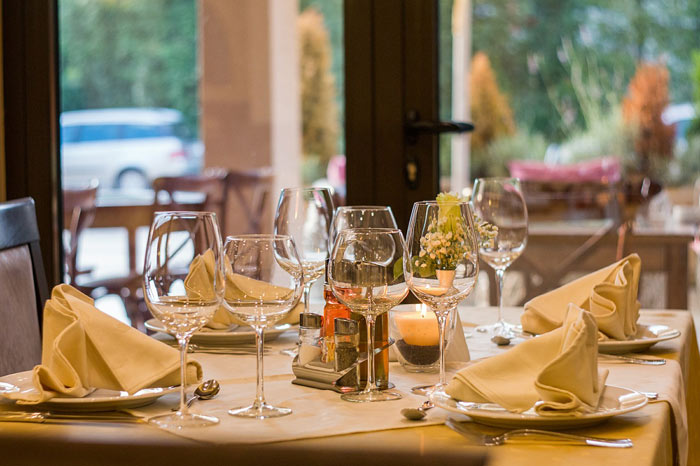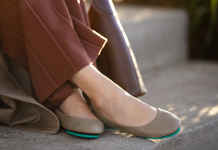Even if you think your table manners are impeccable, you could probably do with some modern expert tips for the next time you’re dining out – whether it’s a date, a family reunion or a business lunch with that big-time recruiter. You might be surprised how little you actually know!
 No matter how much you think you already know about dining etiquette, it’s not unusual to occasionally feel nervous about looking unsophisticated or worried about what your eating habits might say about you. Eating out with friends, extended family or your prospective boss can be tricky, but here are some key rules to keep in mind to gain confidence when doing business or just catching up on old times over a meal.
No matter how much you think you already know about dining etiquette, it’s not unusual to occasionally feel nervous about looking unsophisticated or worried about what your eating habits might say about you. Eating out with friends, extended family or your prospective boss can be tricky, but here are some key rules to keep in mind to gain confidence when doing business or just catching up on old times over a meal.
1. Keep to the seating arrangement
If there are place cards present, never move them. Make sure to keep to the seating arrangement, even if your chair is placed next to your ‘frenemy’ or even your ex! The host has very likely considered each person and many other factors before placing the cards and it would be rude to undermine their efforts by reshuffling.
2. Don’t pull someone’s chair for them
As a male, you may have learned the act of chivalry for a perfect gentleman at a dinner date with a lady is to pull the chair out for her. However, in her book, ‘The Essentials of Business Etiquette’, Barbara Patcher says not to do this. She advises while it’s fine to hold a door open for your guests in a business setting, gendered social rules should be left behind. Therefore, let everyone – male or female – pull out their own chair.
3. Don’t eat until everyone’s been served
Even if you’re the first person to be served, hold off eating until everyone else has also been served. While this may sound like a basic rule, it’s one that most people break regardless. The meal may look sumptuous and your tummy might be rumbling, but surely you’ll want to maintain your table manners regardless, right?
4. Know your utensils
Typically, there are utensils for every course and they will be placed in front of you as you’re served each dish. Are you unsure which utensils are used for each course? As a rule of thumb, for the first course, start with the utensils on the outside and continue this progression with subsequent courses.
5. Know how to communicate ‘rest’ and ‘finished’

Remember that the waiter is there to serve you and your guest/host/group; they need a clear communication channel to be able to identify when you’ve finished eating or if you’re only resting, so they can clear the table or alternatively, wait for you I finish. You can convey this ‘message’ through the placement of your utensils.
To indicate ‘rest’, place the fork across the middle and the knife near the top of the plate. To show you have ‘finished’ your meal, place the fork under the knife, diagonally across the plate.
If you’re hosting, it’s also important to pick a restaurant that places premium value on great service, has an agreeable location, as well as a convivial atmosphere and all the appropriate furniture for dining out.
6. Break bread with your hands
With bread rolls, you don’t have to use a knife – even if it’s a business dinner. Patcher says the etiquette is to break your bread in half with your hand and tear off one piece at a time. Then add butter to each piece when you’re ready to eat it.
7. Don’t use the napkin as a tissue
Your napkin is not a tissue and must never be used like one. Its purpose is to clean the sides of your mouth and not to blow your nose. If you ever have to sneeze, simply excuse yourself and go to the bathroom.
8. Never pick your teeth at the table
 This one seems like an obvious rule, but it still happens. Social etiquette coaches advise never to spit inedible food into your napkin.
This one seems like an obvious rule, but it still happens. Social etiquette coaches advise never to spit inedible food into your napkin.
If you have a leftover chunk or piece of broccoli stuck in your teeth, quickly remove it with your left index finger and thumb and place it under a lettuce leaf. Then, clean your fingers on your napkin. However, make sure it’s not in the middle of a conversation; otherwise, excuse yourself and get the situation fixed in the restroom.
9. As much as possible, discard your cell phone
As a general rule in any business setting, switch your mobile phone off or put it on ‘silent’ mode and in your purse or the inside pocket of your jacket. Having your cell phone in front of you – even if it’s in ‘meeting’ mode – tells your co-diner that they won’t get your full attention.
If it’s a dinner outing with family, friends or colleagues, the atmosphere will be less formal and you can place your phone on the table if need be. If you’re a ‘social media junkie’ (like many people today), you might be tempted to take a picture of your special delicacy and subsequently post it on Facebook or Instagram. If you can’t resist the urge, be sure to show some decorum by limiting the photography to just your own meal, being as noiseless about it as possible and not using flash.
10. Keep conversations in context
For a business lunch, never forget you’re there for the purpose of business and not for the food. For family meets, outings with friends or dinner dates at a fancy restaurant, keep the conversation interesting and stick to topics of mutual interest and don’t be distracted by the environment, even if your favorite programme is airing on TV. There are certain things you should never talk about at a dinner outing, such as how to improve the party, your uber cool job, salaries, body and clothing commentary, as well as fights and arguments etc.
On a final note
 Don’t push away or stack your dishes. That’s the role of the waiting staff and you should let them do their job accordingly.
Don’t push away or stack your dishes. That’s the role of the waiting staff and you should let them do their job accordingly.
Remember to extend your dinner etiquette to the waiting staff and say “thank you” and “please” as appropriate. Don’t complain or talk ill of the food or their service. This could be seen as indirectly insulting your host, not just the restaurant.










